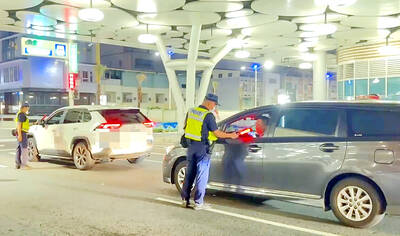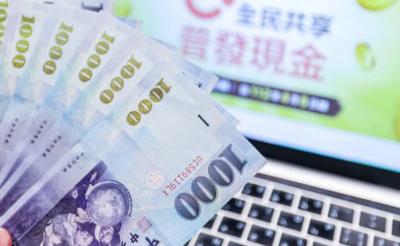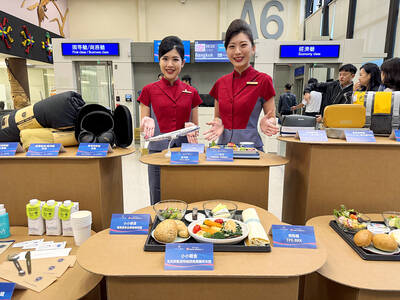Decades of Chinese military modernization has eroded many of Taiwan’s historical advantages in deterring aggression from the Chinese People’s Liberation Army (PLA), the US Department of Defense said in an annual report on Tuesday to the US Congress on military and security developments involving China.
Those advantages include the Taiwanese military’s technological superiority, the geographic advantages of island defense and the PLA’s inability to project sufficient power across the Taiwan Strait, the report said.
“Although Taiwan is taking important steps to build its war reserve stocks, grow its defense industrial base, improve joint operations and crisis response capabilities, and strengthen its officer and non-commissioned officer corps, these improvements only partially address Taiwan’s declining defensive advantages,” the report said.
Taiwan plans to transition to an all-volunteer military force by 2019, but the transition has slowed due to “severe difficulties” in recruiting enough personnel, the report added.
China’s military budget grew at an average of 8.5 percent per year from 2007 to last year and has grown to roughly 14 times that of Taiwan’s military budget, which remains at about 2 percent of GDP, the report said.
The PLA is capable of accomplishing various amphibious operations short of a full-scale invasion of Taiwan, the report said, adding that China could invade Taiwan’s territories in the South China Sea, such as the Pratas Islands (Dongsha Islands, 東沙群島) or Itu Aba Island (Taiping Island, 太平島), or medium-sized islands such as Kinmen or Matsu.
However, such military operations would involve “significant, and possibly prohibitive, political risk, because it could galvanize pro-independence sentiment on Taiwan and generate international opposition,” the report said.
In the report, the department reiterated that the US maintains its “one China” policy based on the Three Joint Communiques and the Taiwan Relations Act.
“The United States opposes any unilateral change to the ‘status quo’ in the Taiwan Strait by either side and does not support Taiwan independence,” the report said.
Meanwhile, China has continued shore-based infrastructure construction in the South China Sea, the report said.
As of late last year, China was constructing 24 fighter hangars, fixed weapons positions, barracks, administration buildings and communication facilities at three outposts — Fiery Cross Reef (Yongshu Reef, 永暑島), Mischief Reef (Meiji Reef, 美濟礁) and Subi Reef (Jhubi Reef, 渚碧礁), it added.
“Once all these facilities are complete, China will have the capacity to house up to three regiments of fighters in the Spratly Islands [Nansha Islands, 南沙群島],” the report said.

TRAFFIC SAFETY RULES: A positive result in a drug test would result in a two-year license suspension for the driver and vehicle, and a fine of up to NT$180,000 The Ministry of Transportation and Communications is to authorize police to conduct roadside saliva tests by the end of the year to deter people from driving while under the influence of narcotics, it said yesterday. The ministry last month unveiled a draft of amended regulations governing traffic safety rules and penalties, which included provisions empowering police to conduct mandatory saliva tests on drivers. While currently rules authorize police to use oral fluid testing kits for signs of drug use, they do not establish penalties for noncompliance or operating procedures for officers to follow, the ministry said. The proposed changes to the regulations require

The Executive Yuan yesterday announced that registration for a one-time universal NT$10,000 cash handout to help people in Taiwan survive US tariffs and inflation would start on Nov. 5, with payouts available as early as Nov. 12. Who is eligible for the handout? Registered Taiwanese nationals are eligible, including those born in Taiwan before April 30 next year with a birth certificate. Non-registered nationals with residence permits, foreign permanent residents and foreign spouses of Taiwanese citizens with residence permits also qualify for the handouts. For people who meet the eligibility requirements, but passed away between yesterday and April 30 next year, surviving family members

China Airlines Ltd (CAL) yesterday morning joined SkyTeam’s Aviation Challenge for the fourth time, operating a demonstration flight for “net zero carbon emissions” from Taiwan Taoyuan International Airport to Bangkok. The flight used sustainable aviation fuel (SAF) at a ratio of up to 40 percent, the highest proportion CAL has achieved to date, the nation’s largest carrier said. Since April, SAF has become available to Taiwanese international carriers at Taipei International Airport (Songshan airport), Kaohsiung International Airport and Taoyuan airport. In previous challenges, CAL operated “net zero carbon emission flights” to Singapore and Japan. At a ceremony at Taoyuan airport, China Airlines chief sustainability

‘ONE CHINA’: A statement that Berlin decides its own China policy did not seem to sit well with Beijing, which offered only one meeting with the German official German Minister for Foreign Affairs Johann Wadephul’s trip to China has been canceled, a spokesperson for his ministry said yesterday, amid rising tensions between the two nations, including over Taiwan. Wadephul had planned to address Chinese curbs on rare earths during his visit, but his comments about Berlin deciding on the “design” of its “one China” policy ahead of the trip appear to have rankled China. Asked about Wadephul’s comments, Chinese Ministry of Foreign Affairs spokesman Guo Jiakun (郭嘉昆) said the “one China principle” has “no room for any self-definition.” In the interview published on Thursday, Wadephul said he would urge China to